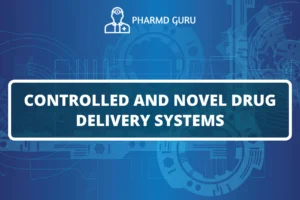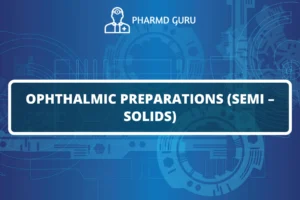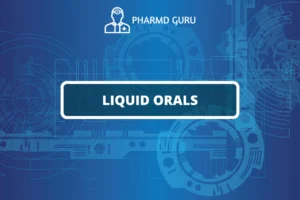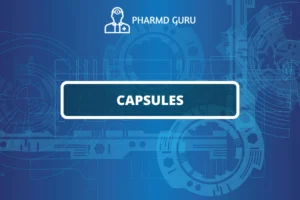Parenterals are pharmaceutical preparations that are administered via routes other than the digestive tract, such as intravenous, intramuscular, or subcutaneous routes. These sterile dosage forms are essential for delivering medications directly into the bloodstream. In this article, we will explore the introduction to parenterals, containers used for parenterals, formulation of large and small volume parenterals, and the sterilization methods employed to ensure their safety.
SCROLL DOWN TO THE BOTTOM OF THIS PAGE FOR ACTUAL NOTES.
Table of Contents
- Introduction to Parenterals
- Containers Used for Parenterals
- 2.1 Glass Containers
- 2.2 Plastic Containers
- 2.3 Official Tests for Containers
- Formulation of Large Volume Parenterals (LVP)
- Formulation of Small Volume Parenterals (SVP)
- Sterilization of Parenterals
1. Introduction to Parenterals
Parenterals are pharmaceutical preparations intended for administration through non-oral routes, bypassing the digestive tract. They are designed to be sterile to ensure safety and efficacy. Parenterals allow for rapid drug delivery and are commonly used for emergency situations, critical care, and when oral administration is not feasible or effective.
Parenterals are classified into two main categories based on their volume: large volume parenterals (LVP) and small volume parenterals (SVP). LVPs typically contain more than 100 mL of solution, while SVPs are administered in volumes less than or equal to 100 mL.
2. Containers Used for Parenterals
The selection of appropriate containers for parenterals is crucial to maintain the sterility and stability of the formulations. The two primary types of containers used for parenterals are glass containers and plastic containers.
2.1 Glass Containers
Glass containers have been widely used in the pharmaceutical industry for parenteral preparations. The advantages of glass containers include their inertness, transparency, impermeability to gases and moisture, and compatibility with a wide range of drug products. Glass containers are available in different types, such as Type I, Type II, and Type III, with varying degrees of chemical resistance.
2.2 Plastic Containers
Plastic containers have gained popularity in recent years due to their advantages, such as being lightweight, shatterproof, and having better chemical resistance in certain cases. Common plastic materials used for parenteral containers include polypropylene (PP) and polyethylene (PE). However, plastic containers may interact with certain drugs, leading to leaching of additives or other substances, which must be carefully considered during formulation.
2.3 Official Tests for Containers
Official tests are conducted to evaluate the quality and suitability of containers for parenterals. These tests ensure that containers meet the required standards and minimize the risks associated with container-related issues. Some common official tests for containers include:
- Container Closure Integrity Test: This test assesses the ability of the container closure system to prevent microbial contamination and maintain the sterility of the parenteral product.
- Chemical Resistance Test: Containers undergo testing to evaluate their resistance to various chemicals and solvents commonly used in pharmaceutical formulations.
- Extractable and Leachable Studies: These studies determine the potential migration of substances from the container material into the parenteral formulation, ensuring the safety and compatibility of the container.
- Water Vapor Transmission Rate: This test measures the rate of water vapor transmission through the container, ensuring appropriate moisture barrier properties.
3. Formulation of Large Volume Parenterals (LVP)
Large volume parenterals (LVP) typically contain more than 100 mL of solution and are used for fluid and electrolyte replacement, maintenance therapy, and large-scale drug delivery. The formulation of LVPs involves several key considerations:
- Selection of Solvent: The choice of solvent is critical, and typically sterile water for injection or appropriate isotonic solutions are used as the base solvent.
- Incorporation of Active Pharmaceutical Ingredient (API): The API is added in the appropriate concentration to achieve the desired therapeutic effect.
- Adjustment of pH: The pH of the LVP formulation is adjusted to ensure compatibility with the API and maintain stability.
- Addition of Excipients: Excipients such as buffering agents, tonicity-adjusting agents, antioxidants, and preservatives may be incorporated to enhance stability and safety.
4. Formulation of Small Volume Parenterals (SVP)
Small volume parenterals (SVP) are administered in volumes less than or equal to 100 mL. They are commonly used for intravenous injections, infusions, and drug administration requiring precise dosing. The formulation of SVPs involves similar considerations as LVPs, but in smaller volumes. The concentration of the API is carefully adjusted to achieve accurate dosing, and compatibility with the chosen solvent and excipients is ensured.
5. Sterilization of Parenterals
Sterilization is a critical step in the manufacturing process of parenterals to ensure the absence of viable microorganisms and maintain the sterility of the formulations. Common methods of sterilization for parenterals include:
- Steam Sterilization (Autoclaving): Parenterals sealed in containers are exposed to high-pressure saturated steam to achieve sterilization. This method is suitable for heat-stable formulations.
- Filtration: Some parenteral formulations, especially SVPs, can be sterilized by passing them through a sterilizing-grade filter with a defined pore size, effectively removing microorganisms.
- Dry Heat Sterilization: Certain heat-stable parenterals can be sterilized using dry heat at high temperatures for a specified duration.
- Radiation Sterilization: Ionizing radiation, such as gamma rays or electron beams, can be employed to sterilize parenteral formulations in their final containers.
The selection of an appropriate sterilization method depends on the formulation’s characteristics, container material, and compatibility with the sterilization process.
ACTUAL NOTES:




